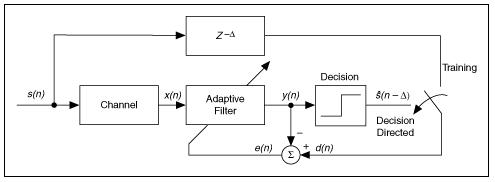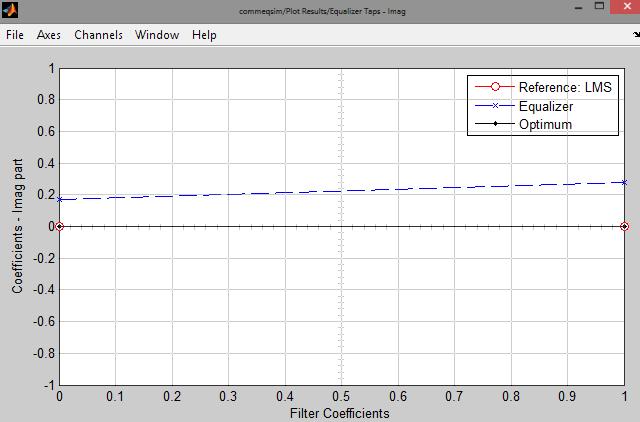ISSN 2348-1218 (print)
International Journal of Interdisciplinary Research and Innovations ISSN 2348-1226 (online) Vol. 11, Issue 1, pp: (1-4), Month: January 2023 - March 2023, Available at: www.researchpublish.com

ISSN 2348-1218 (print)
International Journal of Interdisciplinary Research and Innovations ISSN 2348-1226 (online) Vol. 11, Issue 1, pp: (1-4), Month: January 2023 - March 2023, Available at: www.researchpublish.com
Assistant Professor, School of Computing University of Engineering and technology Roorkee1
Assistant Professor, ECE Dept. Graphic Era Hill University Dehradun2
Assistant Professor, ECE Dept. Dev Bhoomi Group of Institution, Saharanpur3 DOI: https://doi.org/10.5281/zenodo.7509470
Published Date: 06-January-2023
Abstract: In this paper, the adaptive equalization techniques are used to transmit data through a communication channel. Because the signal cannot be demodulate perfectly at the output of a communication system. However, in practically, all the channels are non ideal and noisy in nature. So, to recover the original signal after demodulation, equalizers minimize the error between the original transmitted signal and demodulated signal. In this paper Least Mean Square (LMS) and Constant Modulus Algorithm (CMA) Algorithms are used.
Keywords: Adaptive Filter, Adaptive Equalization, Channel Equalization, LMS Linear Equalization RLS Linear Equalization and Constant Modulus Algorithm.
An adaptive equalizer is an equalizer that automatically adapts to time-varying properties of the communication channel The main function of the adaptive channel equalization is to eliminate inter symbol interference (ISI) and the additive noise as much as possible ina communicationchannel. Communicationsystems transmit a signal fromone point to another across a communication channel, such as an electrical wire, a fiber optical cable, or a wireless channel. In this paper, adaptive equalizer system is an equalizer that automatically adapts to time-varying properties of the communication channel. The adaptive equalizer is used in high-speed communication systems, which do not use differential modulation schemes or frequency division multiplexing. It is frequently used with coherent modulations such as phase shift keying, mitigating the effects of multipath propagation and Doppler spreading
So the adaptive equalizer compensates the signal distortion. During the transmission process, the signal that contains information might become distorted [1]. To compensate for this distortion, you can apply an adaptive filter to the communication channel. The adaptive filter works as an adaptive channel equalizer. The figure 1 shows the basic block diagram of an adaptive channel equalization system [6] & [7].
Figure 1: basic block diagram of an adaptive channel equalization system

ISSN 2348-1218 (print)
International Journal of Interdisciplinary Research and Innovations ISSN 2348-1226 (online)
Vol. 11, Issue 1, pp: (1-4), Month: January 2023 - March 2023, Available at: www.researchpublish.com
In the figure 1, s (n) is the input signal that you transmit through the communication channel, and x (n) is the distorted output signal. To compensate for the signal distortion, the adaptive channel equalization system completes the following two modes.
This mode helps you to determine the appropriate coefficients of the adaptive filter. When you transmit the signal s(n) to the communication channel, you also apply a delayed version of the same signal to the adaptive filter. In the previous figure, z–Δ is a delay function and d(n) is the delayed signal. y(n) is the output signal from the adaptive filter and e(n) is the error signal between d(n) and y(n). The adaptive filter iteratively adjusts the coefficients to minimize e(n). After the power of e(n) converges, y(n) is almost identical to d(n), which means that you can use the resulting adaptive filter coefficients to compensate for the signal distortion [8].
After you determine the appropriate coefficients of the adaptive filter, you can switch the adaptive channel equalization system to decision-directed mode. In this mode, the adaptive channel equalization system decodes the signal y(n) and produces a new signal , which is an estimation of the signal s(n) except for a delay of Δ taps [8]. So the adaptive filters play a vital role in the channel equalization. The general set up of adaptive filtering environment is shown in Figure 2.

Where k is the iteration number, x (k) denotes the input signal, y (k) is the adaptive filter output, and d (k) defines the desired signal. The error signal e (k) is calculated as d (k) - y (k). The error is then used to form a performance function or objective function that is required by the adaptation algorithm in order to determine the appropriate updating of the filter coefficients. The minimization of the objective function implies that the adaptive filter output signal is matching the desired signal in some sense [3].
There are two types of equalizers which is used in the communication channel to compensate for signal distortion, one is the reference equalizer that uses the LMS algorithm and second is the configurable equalizer in which we use Least Mean Square (LMS), Normalized LMS, Variable Step-Size LMS, Recursive Least Squares (RLS), and Constant Modulus Algorithm (CMA).
Figure 3: Adaptive Equalization: LMS and CMA.

ISSN 2348-1218 (print)
International Journal of Interdisciplinary Research and Innovations ISSN 2348-1226 (online) Vol. 11, Issue 1, pp: (1-4), Month: January 2023 - March 2023, Available at: www.researchpublish.com
The upper part of the figure 3 is LMS linear equalizer. The CMA equalizer simulation transmits a general QAM signal, modeling the channel using channel model. The equalizer receives the signal from the channel and, as training symbols, a subset of the modulator's output. The equalizer operates in training mode at the beginning of each frame and switches to decision-directed mode when it runs out of training symbols. And the same signal is transmitted via a CMA Equalizer. The example contrasts the signals before and after equalization to illustrate the effect of the equalizer which is shown in results.
A. Signals comparison of Equalizer and Channel with magnitude and frequency response


Figure 4: Equalizer and Channel with magnitude and frequency response
B. MMSE CONVERGENCE OF EQUALIZER

Figure 5: MMSE Convergence of Equalizer
C. EQUALIZER TAPS RESULTS IN IMAGINARY
Figure 6: Equalizer Taps results in imaginary
ISSN 2348-1218 (print)
International Journal of Interdisciplinary Research and Innovations ISSN 2348-1226 (online) Vol. 11, Issue 1, pp: (1-4), Month: January 2023 - March 2023, Available at: www.researchpublish.com
In this paper, the two types of adaptive equalizer for communication systems are reviewed. One is Least Mean Square (LMS) linear equalizer and second is Constant Modulus Algorithm Equalizer. The adaptive nature of the filter allows it to actively cancel out the adverse effects of the channel even without knowing the characteristics of the channel beforehand. This paper compares the LMS equalizer and Equalizer system.

[1] Kevin Banovic, “Adaptive Equalization: A Tutorial”, Research Centre for Microsystems, University of Windsor, Windsor, Ontario, Canada, October 14, 2005.
[2] Shahid U. H. Qureshi, “Adaptive Equalization”, proceedings of IEEE, Vol. 73. No. 9, September 1985, IEEE.
[3] David Johns, “Equalization”, University of Toronto, 1997.
[4] Paulo S.R. Diniz, “Adaptive Filtering: Algorithms and Practical Implementation”, Universiade Federal do Rio de Janeiro, 3rd edition, pp 13-35, 2008.
[5] I. Ravi Kumar, “Digital Signal Processing”, Published by Satya Prakashan, New Delhi, 1st edition 2008.
[6] S Salivahanan “Digital Signal Processing”, Tata McGraw Hill Private Limited, 2nd edition 2002.
[7] Emmanuel C. Ifeachor and Barrie W.Jervis, “Digital Signal Processinga Practical Approach”, Published byPearson Education (Singapore) pvt. Ltd., 2nd edition, 2002.
[8] Garima Malik and Amandeep Singh Sappal, “Adaptive Equalization Algorithms: An Overview”, International Journal of Advanced Computer Science and Applications (IJACSA), Vol. 2, No.3, March 2011.